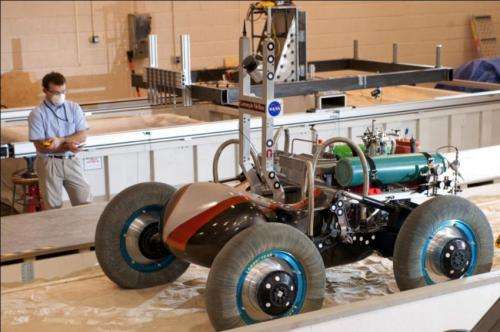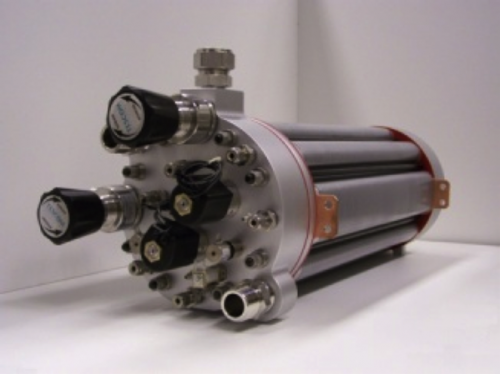NASA selects proposals for advanced energy storage systems

NASA has selected four proposals for advanced energy storage technologies that may be used to power the agency's future space missions.
Development of these new energy storage devices will help enable NASA's future robotic and human-exploration missions and aligns with conclusions presented in the National Research Council's "NASA Space Technology Roadmaps and Priorities," which calls for improved energy generation and storage "with reliable power systems that can survive the wide range of environments unique to NASA missions." NASA believes these awards will lead to such energy breakthroughs.
"NASA's advanced space technology development doesn't stop with hardware and instruments for spacecraft," said Michael Gazarik, associate administrator for Space Technology at NASA Headquarters in Washington. "New energy storage technology will be critical to our future exploration of deep space—whether missions to an asteroid, Mars or beyond. That's why we're investing in this critical mission technology area."
Managed by the Game Changing Development Program within NASA's Space Technology Mission Directorate, the four selected technology proposals are:
— Silicon Anode Based Cells for High Specific Energy Systems, submitted by Amprius, Inc, in Sunnyvale, California
— High Energy Density and Long-Life Li-S Batteries for Aerospace Applications, submitted by the California Institute of Technology in Pasadena
— Advanced High Energy Rechargeable Lithium-Sulfur Batteries, submitted by Indiana University in Bloomington
— Garnet Electrolyte Based Safe, Lithium-Sulfur Energy Storage, submitted by the University of Maryland, College Park

Phase I awards are approximately $250,000 and provide funding to conduct an eight-month component test and analysis phase. Phase II is an engineering development unit hardware phase that provides as much as $1 million per award for one year, while Phase III consists of the prototype hardware development, as much as $2 million per award for 18 months.
Proposals for this solicitation were submitted by NASA centers, federally funded research and development centers, universities and industry. NASA's Langley Research Center in Hampton, Virginia, manages the Game Changing Development program for the Space Technology Mission Directorate.
NASA is working closely with the Department of Energy's Advanced Research Projects Agency (ARPA-E) and other partners to propel the development of energy storage technology solutions for future human and robotic exploration missions. Committed to developing the critical technologies needed for deep space exploration, NASA's Space Technology Mission Directorate will make significant investments over the next 18 months to address several high-priority challenges in achieving this goal.
Provided by NASA


















